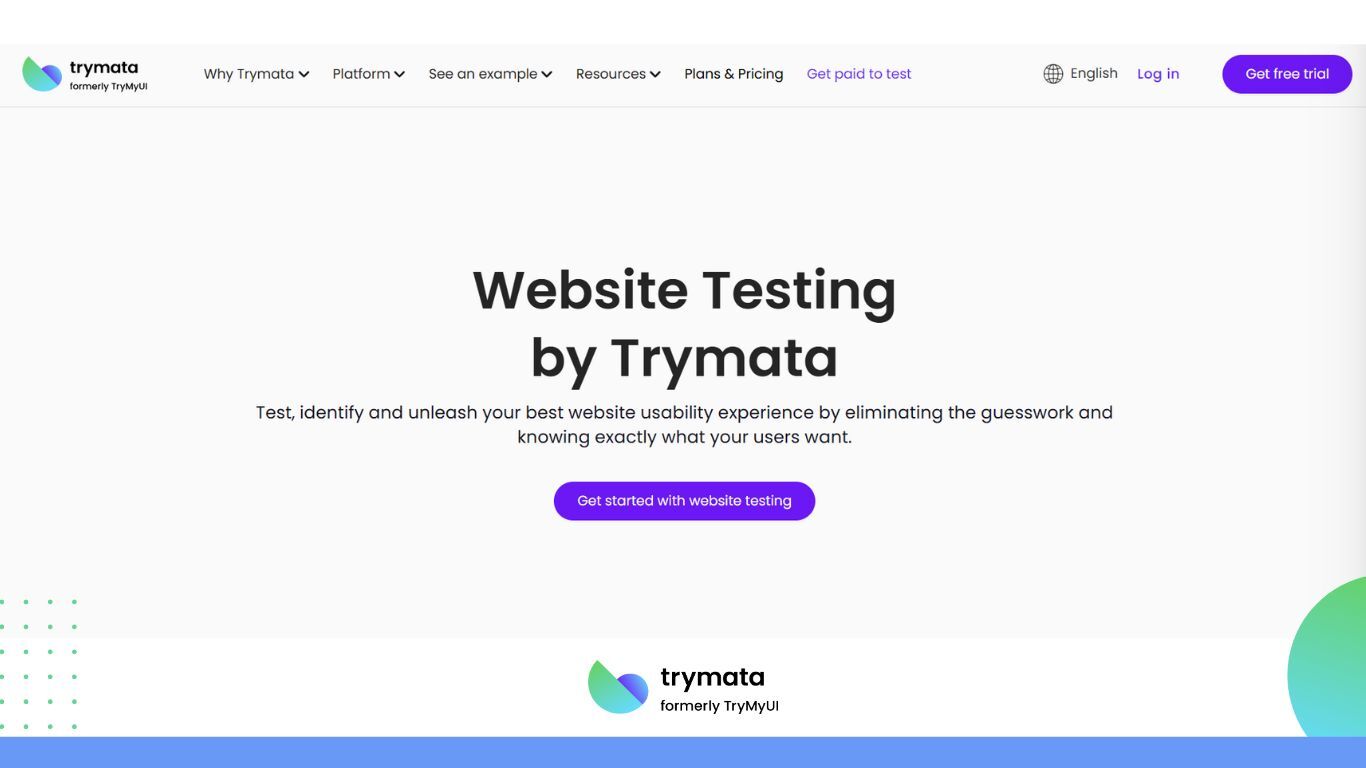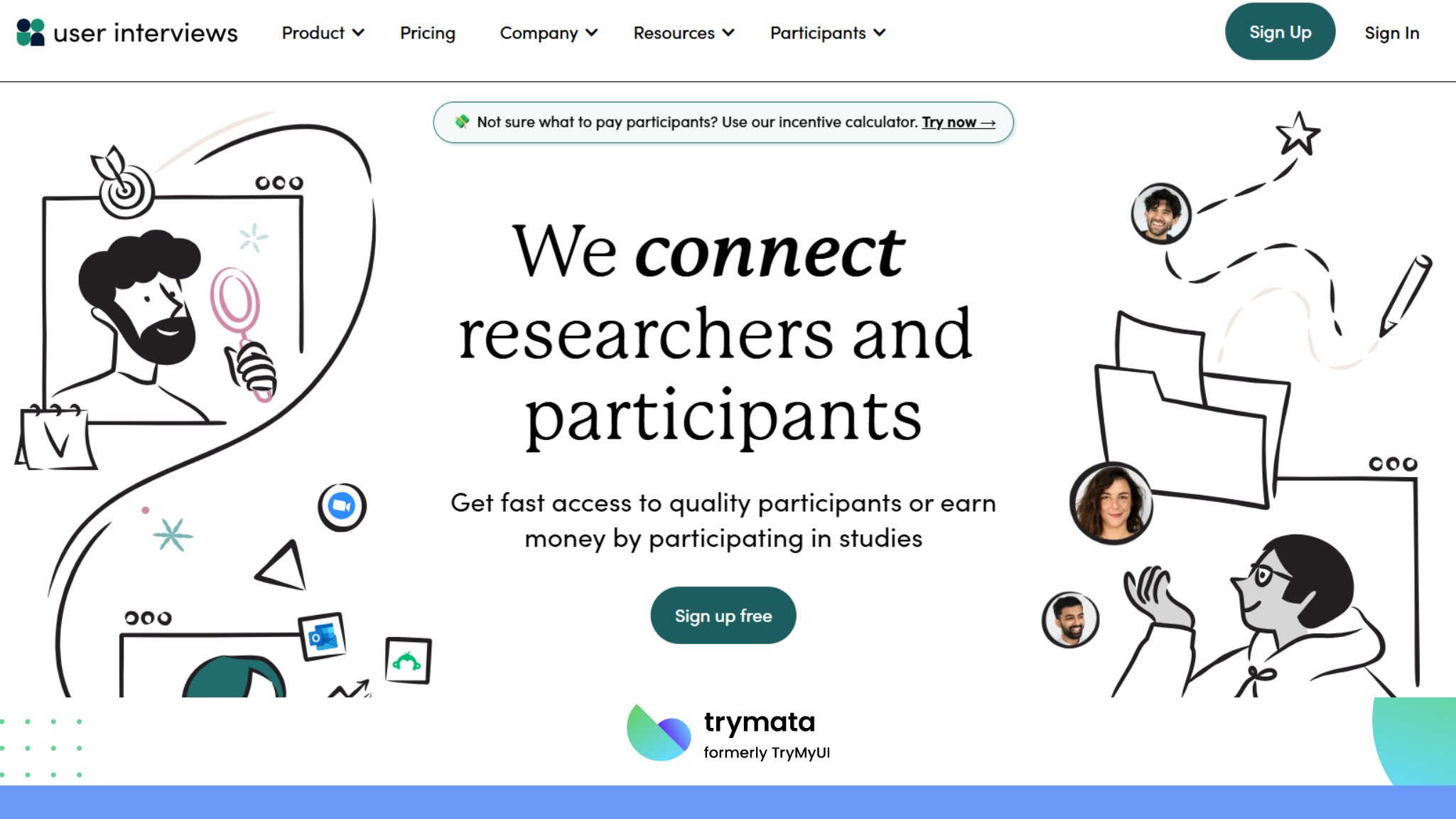If you’re building digital products, you already know that guessing what users want rarely works. That’s why you need UX research tools. They help you see how real people interact with your product, uncover pain points, and gather feedback that leads to smarter design decisions.
In 2025, the market is full of powerful platforms, but not all of them are created equal. Some focus on usability testing, others on behavior analytics, and a few make participant recruitment effortless. To save you time, we’ve rounded up the 5 best UX research tools.
Whether you’re a product manager, designer, or researcher, this guide will help you compare features, understand pricing, and choose the right tool to create user experiences people truly love.
What UX Research Tools Do?
UX research tools help teams go beyond assumptions by showing how real users interact with digital products. Their main purpose is to collect data and feedback that leads to actionable insights for better design decisions.
Here’s what these tools typically do:
- Observe user behavior: Through session recordings, heat maps, and usability testing, they reveal where users click, scroll, or struggle.
- Gather user feedback: With surveys, intercept polls, and live user interviews, they capture opinions, pain points, and motivations.
- Test design decisions: Using methods like tree testing, card sorting, and click testing, they validate information architecture and design elements.
- Recruit participants: Many platforms simplify participant recruitment so you can test with high-quality users from your target audience.
- Analyze results: Dashboards and reports turn raw data into quantitative metrics and qualitative insights that product teams can act on.
UX research tools guide the entire research process from collecting data to generating valuable insights so product teams can design digital products that meet user needs and improve the overall user journey.
5 Best UX Research Tools to Enhance Customer Experience
Choosing the right UX research tools can feel overwhelming with so many popular tools on the market. Each platform offers different strengths, from usability testing and session recordings to participant recruitment and interactive prototypes.
1. Trymata (Best for Comprehensive UX Testing)
Trymata(formerly TryMyUI) offers end-to-end usability testing, session recordings, and customer feedback analysis. It helps research teams uncover insights about user behavior, identify friction points in the user journey, and make informed product decisions with actionable insights.

Features:
- Remote usability testing with real users.
- Session recordings for behavior analysis.
- Customizable dashboards for research data.
- Participant recruiting and management tools.
- Task-based usability reporting.
- Quantitative and qualitative data collection.
- Customer feedback widgets.
Limitations:
- Need expert help for advanced use.
Pricing: Plans start at $399/month.
2. Hotjar (Best for Heatmaps & Behavior Analytics)
Hotjar is one of the most popular UX research tools for visualizing user interactions. Known for its heatmaps, polls, and session recordings, it helps UX researchers see how users interact with websites and pinpoint where they drop off in the journey.
Features:
- Click maps, move maps, and scroll heatmaps.
- Session recordings to analyze real users.
- On-site feedback and intercept surveys.
- Funnels and conversion tracking.
- Easy integration with CMS and analytics tools.
Limitations:
- Lacks advanced usability testing features.
- No participant recruitment built in.
Pricing: Free basic plan; paid plans start at $39/month.
3. Maze (Best for Rapid Prototype Testing)
Maze is a powerful UX research platform built for designers who need fast feedback on prototypes. It supports remote testing, interactive prototypes, and integrates with leading design tools like Figma and Adobe XD.
Features:
- Rapid prototype testing with real users.
- Tree testing and card sorting for information architecture.
- Click testing for design elements.
- Remote usability testing at scale.
- Surveys with customizable questions.
- Data collected in real-time.
- Participant recruiting options.
Limitations:
- Focused on prototype testing, not end-to-end UX.
- Limited session recording capabilities.
Pricing: Paid plans start at $99/month.
4. User Interviews (Best for Recruiting Participants)
User Interviews is a participant recruitment platform that makes it easy to connect with high-quality participants for UX studies. It’s ideal for research teams that need targeted audiences for user interviews, diary studies, or focus groups.

Features:
- Participant recruitment with screening options.
- Automated scheduling and reminders.
- Supports live user interviews and remote testing.
- Panel management for recurring studies.
- Incentive management and payments.
Limitations:
- Focuses mainly on recruiting, not actual testing tools.
- Pricing can increase with larger participant pools.
Pricing: Pricing plans are available upon request.
5. Loop11 (Best for Remote Usability Testing)
Loop11 specializes in remote usability testing, supporting both moderated and unmoderated sessions. It allows teams to test information architecture, evaluate digital products, and gather user feedback at scale.
Features:
- Moderated and unmoderated usability testing.
- Task analysis and completion metrics.
- Click testing and heat maps.
- Card sorting and tree testing.
- Video and audio session recordings.
- Supports mobile and desktop testing.
Limitations:
- The user interface feels less modern than newer tools.
- No built-in project management features.
Pricing: Paid plans start at $199/month.
All of these UX research platforms serve unique purposes. While no single tool fits every need, combining the right mix ensures your research teams can gather both quantitative data and qualitative methods to guide better design outcomes.
Comparing Tools to Help You Choose the Right One
With so many UX research tools available, it’s not always easy to see which one fits your needs. To help you compare at a glance, we’ve put together a side-by-side look at the best UX research platforms.
| Tool | Best For | Pricing | G2 Rating | Limitations |
| Trymata | Comprehensive UX testing (end-to-end) | Starts at $399/month |
4.3/5 |
Needs expert help for advanced use |
| Hotjar | Heatmaps & behavior analytics | Paid from $39/month |
4.3/5 |
Lacks advanced usability testing features; no participant recruitment |
| Maze | Rapid prototype testing | Paid plans from $99/month |
4.5/5 |
Focused only on prototype testing; limited session recording capabilities |
| User Interviews | Recruiting participants for studies | Custom pricing (per recruit) |
4.6/5 |
Focused mainly on recruiting, not actual testing; costs increase with volume |
| Loop11 | Remote usability testing | Paid plans from $199/month |
3.7/5 |
UI feels outdated; no built-in project management features |
As you can see, each platform serves a slightly different purpose. By understanding these differences, your research teams can choose the right combination of tools to uncover insights, gather feedback, and create better user experiences.
Why Trymata is the Best All-in-One UX Research Tool?
If you’re looking for a comprehensive UX research platform, Trymata is one of the few tools that truly covers the entire process. Trymata brings everything together in one powerful platform.
Here’s why it can be the best one tool for your research teams and product teams:
- All-in-one solution: From remote usability testing to customer feedback and session recordings, Trymata handles both qualitative methods and quantitative data.
- Actionable insights: Its customizable dashboards turn raw data into reports that help you make informed decisions faster.
- High-quality participants: Built-in participant recruiting ensures you test with real users that match your target audience.
- Scales with your team: Suitable for research teams of any size, Trymata works equally well for startups, agencies, and enterprise product teams.
- Transparent pricing: With plans starting at $399/month, Trymata may cost more than lighter tools like Hotjar or Maze, but it replaces the need for multiple subscriptions. That makes it more cost-effective if you want one tool to manage the entire research process.
By choosing Trymata, you’re not just picking another UX research tool; you’re investing in a complete platform that helps you uncover insights, improve the user journey, and design digital products that people love.
Conclusion
Finding the best UX research tools depends on understanding your team’s goals, budget, and research process. If you’re looking for a more comprehensive platform that combines usability testing, session recordings, participant recruitment, and customer feedback in one place, Trymata stands out as the strongest option.
At the end of the day, the right tool is the one that helps your research teams gather the insights they need to improve the user journey, meet user needs, and deliver digital products that people enjoy using.
By investing in the right mix or choosing an end-to-end solution like Trymata, you’ll save time, reduce guesswork, and create experiences that leave users satisfied.




